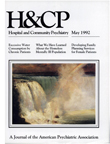A Perspective on the Attention-Deficit Disorders
Abstract
New technologies enabling the measurement of specific brain functions have made increasingly sophisticated studies possible, such as Posner and Petersen's work (8) on the components of attentional function, the investigations of frontal lobe pathology by Lou and associates (9) and Zametkin and associates (10), and Mirsky's work (11) on executive function. These and other studies have been reviewed by those who work on the development of diagnostic classifications.
The proposed changes discussed here are themselves being evaluated in a DSM-IV field trial, which will compare criteria proposed for DSMIV with criteria from DSM-III, DSM-III-R, and lCD-10 for attention-deficit disorder and attention-deficit disorder with hyperactivity. A total of 650 subjects of varying ages in various settings, including a preschool child psychiatry clinic, a public school psychology program, a pediatric screening program, and a pediatric child study center, will be evaluated. Results from the field trial will help the child and adolescent disorders work group make final decisions about proposed criteria for DSM-IV.
The diagnosis and classification of attention-deficit disorders are being carefully reconsidered as part of the DSM-IV process. It is essential that the syndrome not be underdiagnosed, as has been the case in subjects who are mildly affected, without hyperactivity or other disruptive symptoms, and, often, female. It is equally important that the syndrome not be overdiagnosed by focusing on the disruptive symptoms of increased non-goal-directed motor behavior and impulsivity. The research to date suggests that, whenever possible, the diagnosis of attention-deficit disorder should be supported by careful neuropsychological testing.
Access content
To read the fulltext, please use one of the options below to sign in or purchase access.- Personal login
- Institutional Login
- Sign in via OpenAthens
- Register for access
-
Please login/register if you wish to pair your device and check access availability.
Not a subscriber?
PsychiatryOnline subscription options offer access to the DSM-5 library, books, journals, CME, and patient resources. This all-in-one virtual library provides psychiatrists and mental health professionals with key resources for diagnosis, treatment, research, and professional development.
Need more help? PsychiatryOnline Customer Service may be reached by emailing [email protected] or by calling 800-368-5777 (in the U.S.) or 703-907-7322 (outside the U.S.).



